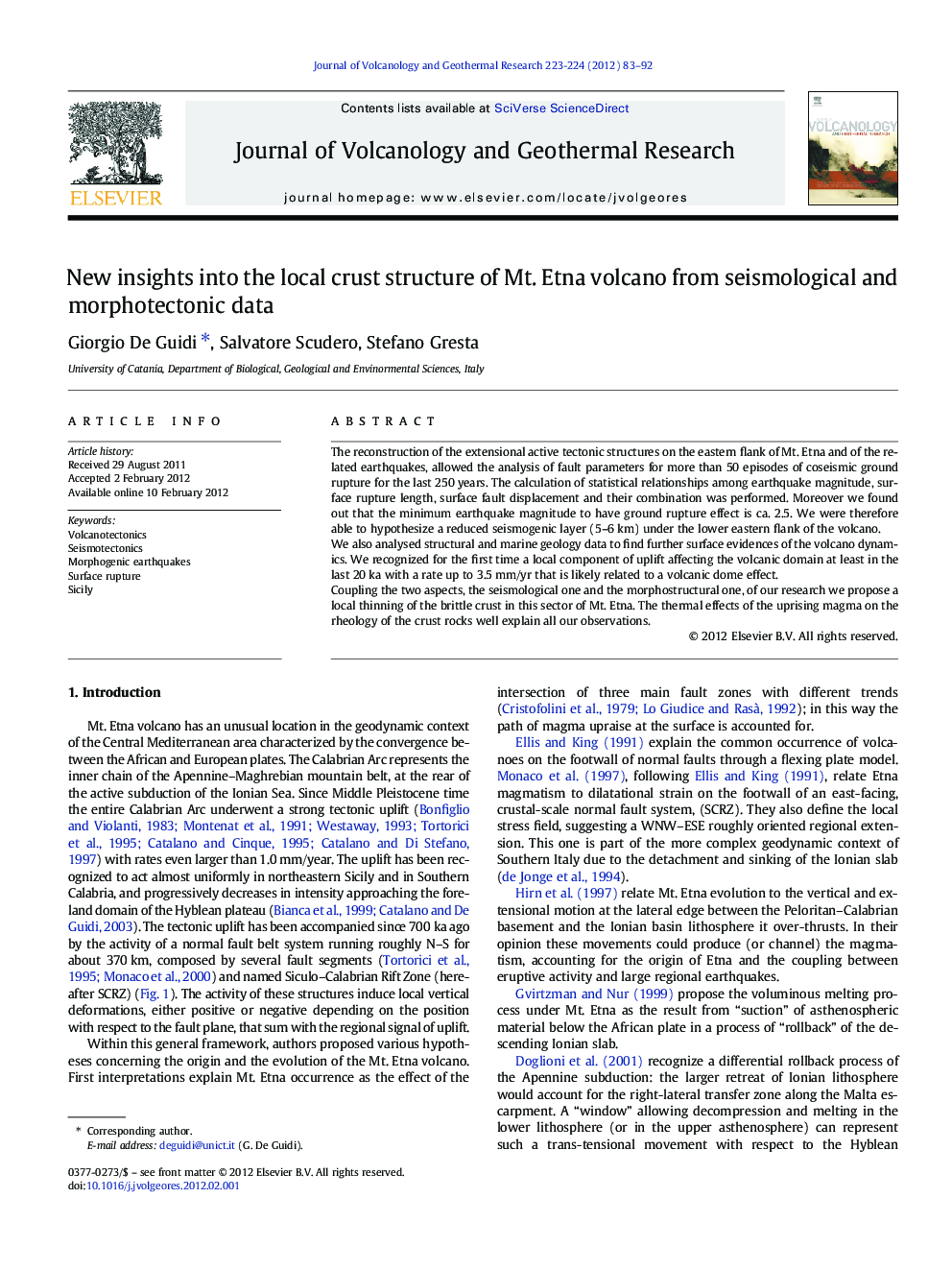| Article ID | Journal | Published Year | Pages | File Type |
|---|---|---|---|---|
| 4713796 | Journal of Volcanology and Geothermal Research | 2012 | 10 Pages |
The reconstruction of the extensional active tectonic structures on the eastern flank of Mt. Etna and of the related earthquakes, allowed the analysis of fault parameters for more than 50 episodes of coseismic ground rupture for the last 250 years. The calculation of statistical relationships among earthquake magnitude, surface rupture length, surface fault displacement and their combination was performed. Moreover we found out that the minimum earthquake magnitude to have ground rupture effect is ca. 2.5. We were therefore able to hypothesize a reduced seismogenic layer (5–6 km) under the lower eastern flank of the volcano.We also analysed structural and marine geology data to find further surface evidences of the volcano dynamics. We recognized for the first time a local component of uplift affecting the volcanic domain at least in the last 20 ka with a rate up to 3.5 mm/yr that is likely related to a volcanic dome effect.Coupling the two aspects, the seismological one and the morphostructural one, of our research we propose a local thinning of the brittle crust in this sector of Mt. Etna. The thermal effects of the uprising magma on the rheology of the crust rocks well explain all our observations.
► An extensional belt named Siculo–Calabrian Rift Zone (SCRZ) crosses Eastern Sicily. ► SCRZ shows anomalous seismotectonic behaviour when it crosses Mt. Etna volcano area. ► Fault segments and their related earthquakes do not obey the scale law relationships. ► Huge deformations caused by Mt. Etna thermal anomaly have been detected and quantified. ► Brittle crust below the eastern flank of Mt. Etna has reduced thickness.
